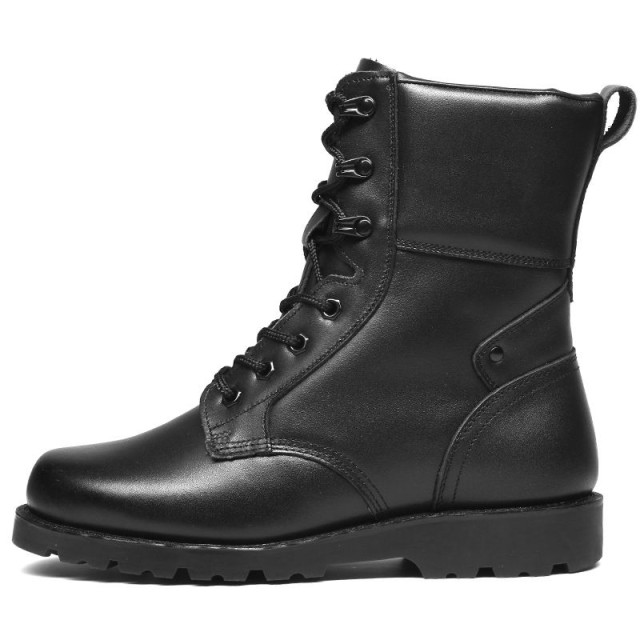Goodyear welted shoes represent a significant investment in quality footwear. With proper care and timely resoling, these shoes can last decades—outperforming cheaper alternatives while developing a unique patina. This guide breaks down essential maintenance routines, resoling strategies, and long-term ownership benefits to maximize your footwear investment.
Understanding Goodyear Welt Construction
Goodyear welting involves stitching a leather strip (welt) to the shoe's upper and insole, then attaching the outsole. This construction allows repeated resoling while preserving the upper leather—a hallmark of durability.
Why Resoling is Central to Longevity
- Preserves Upper Leather: High-quality uppers improve with age when maintained. Resoling prevents structural damage to the leather.
- Cost Efficiency: Resoling costs a fraction of replacement. A well-maintained pair can undergo 5+ resoles.
- Customization: Swap soles for different needs (e.g., rubber for wet weather, leather for formal occasions).
Key Insight: Research shows Goodyear welted shoes last 2–3 times longer than cemented alternatives when properly cared for.
Daily and Seasonal Maintenance Routines
Daily Care
- Brushing: Use a horsehair brush to remove dirt after each wear.
- Shoe Trees: Insert cedar shoe trees to absorb moisture and maintain shape.
- Rotation: Avoid wearing the same pair consecutively to allow drying.
Seasonal Conditioning
- Leather Conditioning: Apply conditioner every 3–4 months using microfiber cloths. Focus on seams and flex points.
- Sole Care: Condition leather soles twice yearly to prevent cracking.
- Storage: Keep shoes in breathable bags away from sunlight; avoid plastic covers that trap moisture.
Pro Tip: For heavy stains, seek professional cleaning to avoid damaging the leather’s natural oils.
Navigating the Resoling Process
Identifying the Right Time for Resoling
- Visible Wear: Soles with holes or separated stitching compromise waterproofing.
- Traction Loss: Smooth leather soles or flattened rubber lugs indicate replacement needs.
- Discomfort: Worn-out cork footbeds (which mold to your feet) may require renewal during resoling.
Choosing a Skilled Cobbler
- Inspect Their Work: Ask for examples of resoled Goodyear welted shoes. Check for even stitching and sole alignment.
- Material Options: Discuss sole materials (e.g., Vibram for durability, leather for aesthetics).
- Turnaround Time: Quality resoling takes 2–4 weeks—avoid rushed jobs.
Case Study: A 20-year-old pair of Goodyear wingtips, resoled 4 times, retained their original upper leather’s integrity.
Cost-Benefit Analysis of Long-Term Ownership
Comparing Resoling vs. New Purchases
- Resoling Cost: Typically 20–30% of a new pair’s price.
- Break-Even Point: After 2–3 resoles, savings exceed the cost of a replacement cemented shoe.
- Environmental Impact: Fewer shoes discarded reduces waste.
Case Studies: Decades-Old Goodyear Welted Shoes
- Military Boots: Some WWII-era boots remain functional after periodic resoling.
- Dress Shoes: Patina-rich Oxfords worn 50+ years showcase the longevity of quality uppers.
Did You Know? Properly maintained Goodyear welted shoes can outlive their owners, becoming heirlooms.
Ready to Invest in Timeless Footwear?
3515 Footwear specializes in durable Goodyear welted shoes designed for distributors and brand owners seeking bulk solutions. Our construction ensures decades of wear with routine care—partner with us to equip your clients with footwear that ages gracefully.
Explore our catalog today and discover footwear built to last.
Related Products
- Durable Moc Toe Wedge Sole Work Boots for Wholesale and Private Label
- Durable Moc-Toe Wedge Work Boots | Wholesale Manufacturing for Brands
- Puncture-Resistant Velcro Safety Boots for Wholesale & Custom Manufacturing
- Factory-Direct Wholesale Canvas Boots with High-Traction Rubber Soles
- Durable Rubber-Soled Utility Shoes for Wholesale & Custom Brand Manufacturing
Related Articles
- Moc Toe Safety Boots: When Style Meets Workplace Protection
- Composite Toe Boots: The Modern Safety Solution for Demanding Work Environments
- How Composite Toe Boots Enhance Safety and Speed for Emergency Responders
- How Military Boot Sole Engineering Solves Tactical Challenges in Extreme Environments
- How Composite Toe Boots Deliver Safety Without Sacrificing Comfort in Regulated Workplaces



















